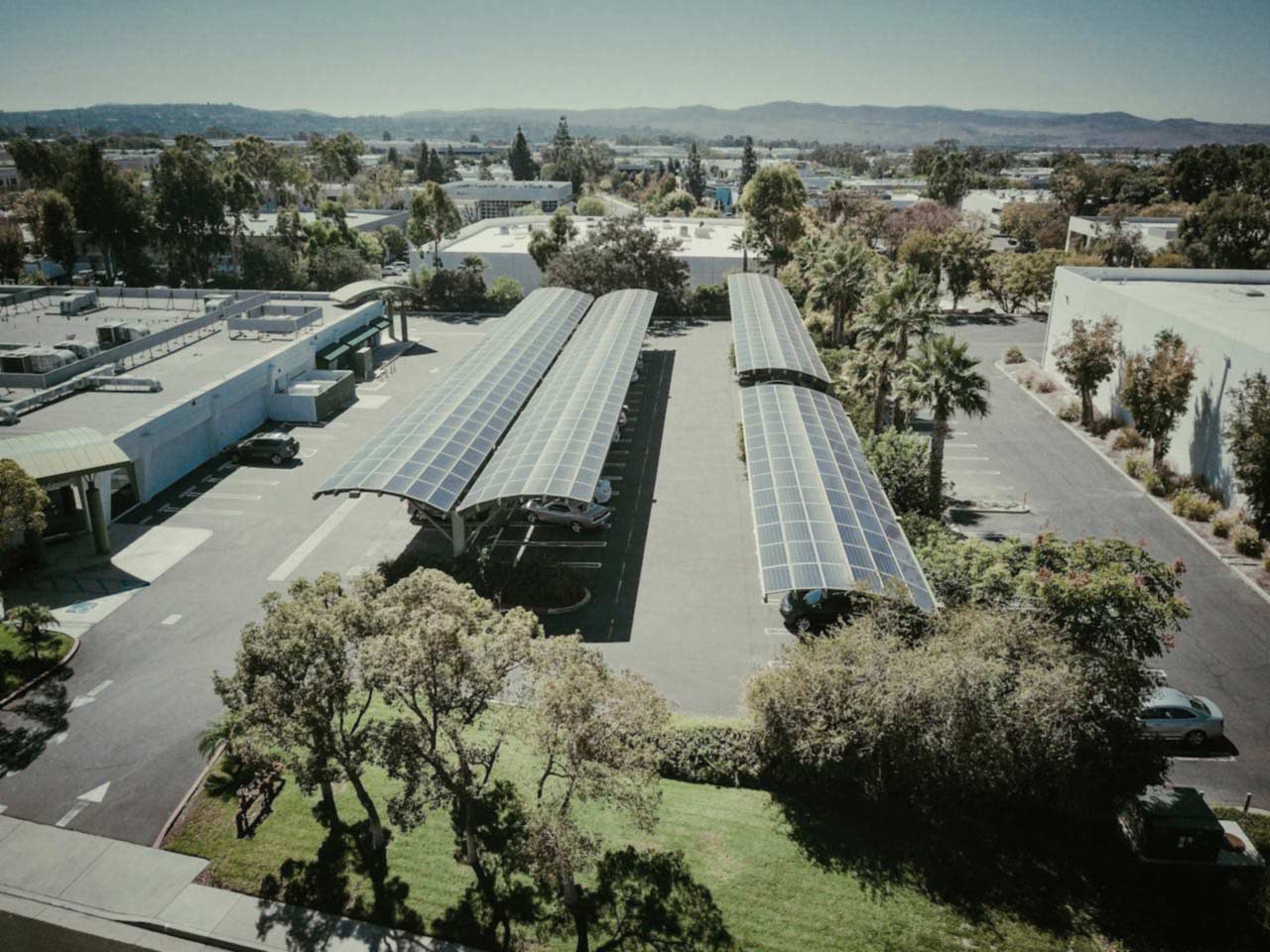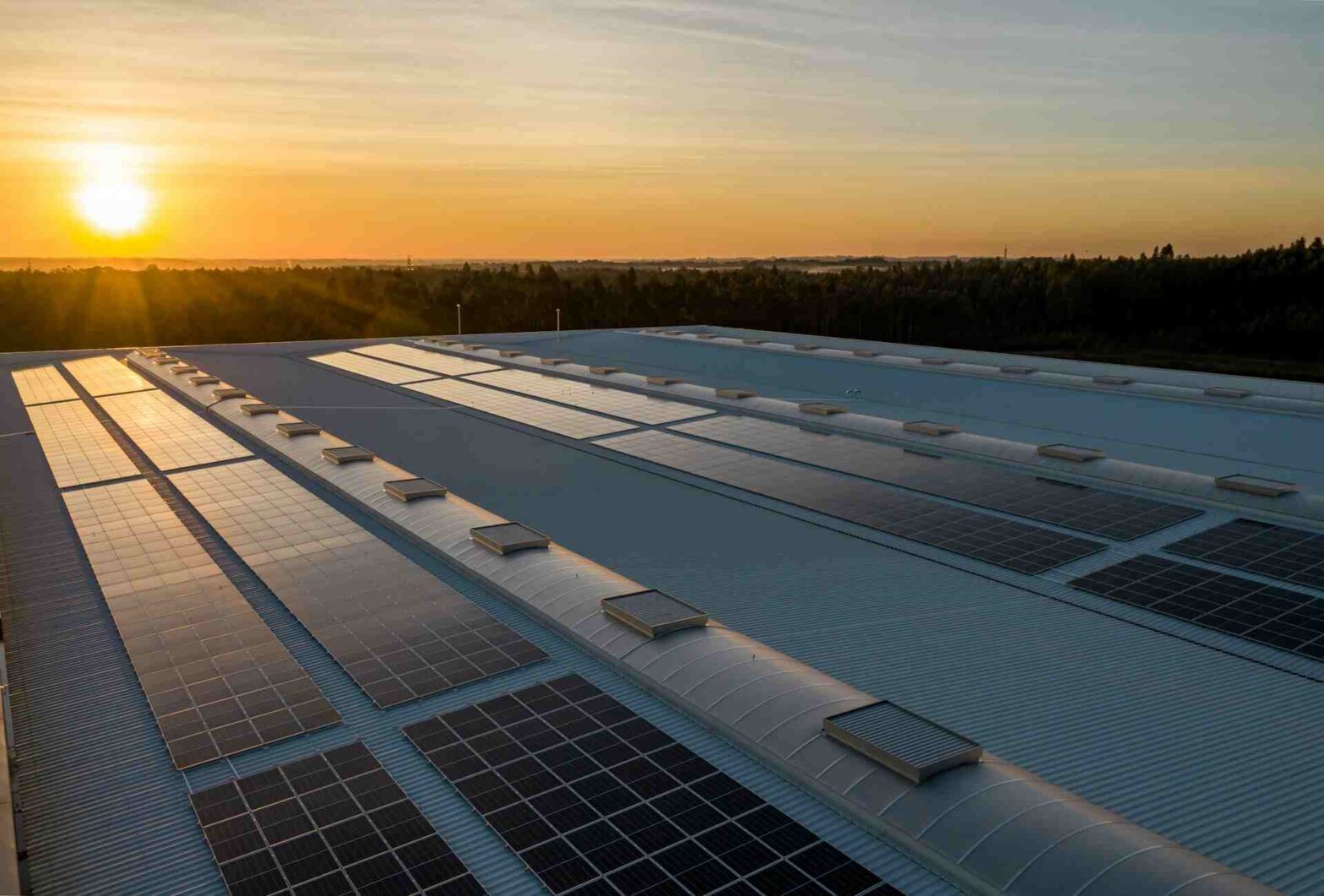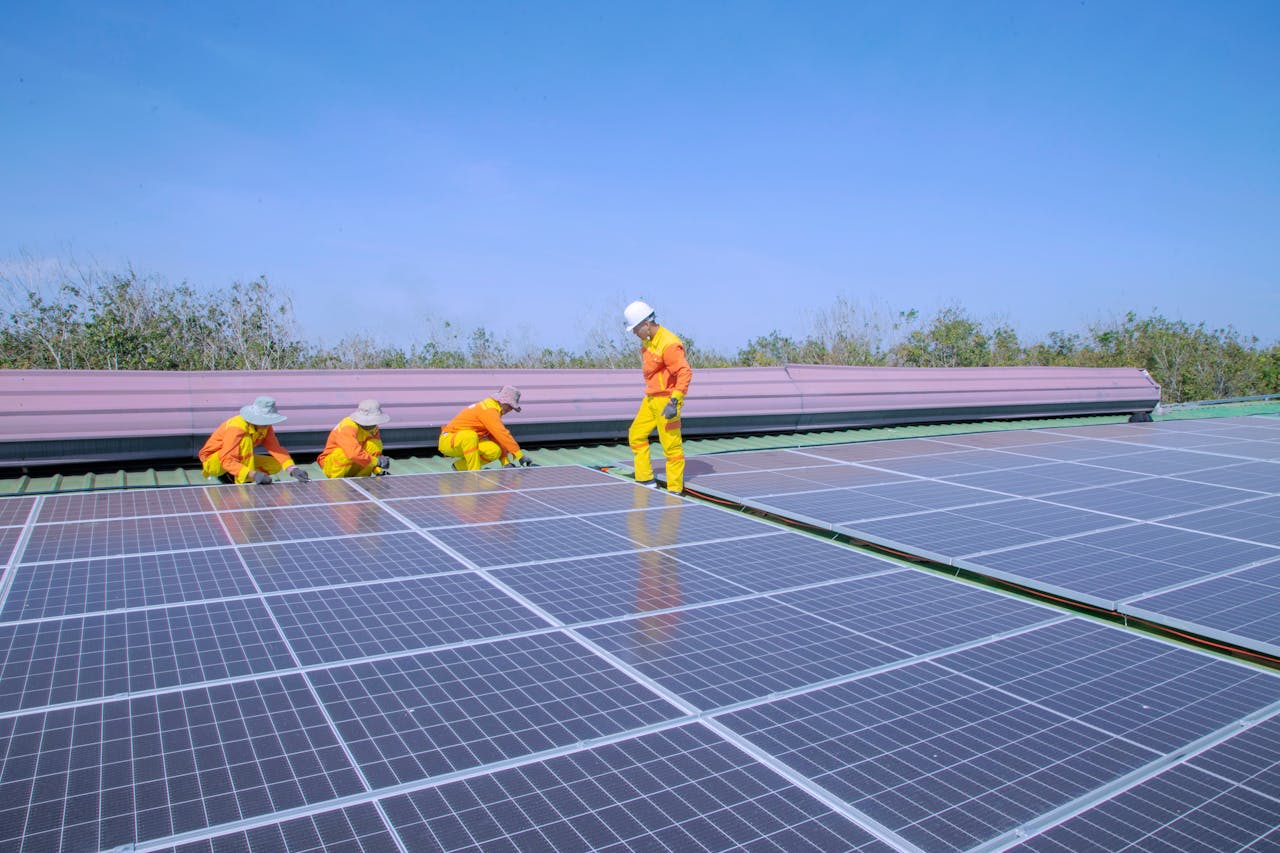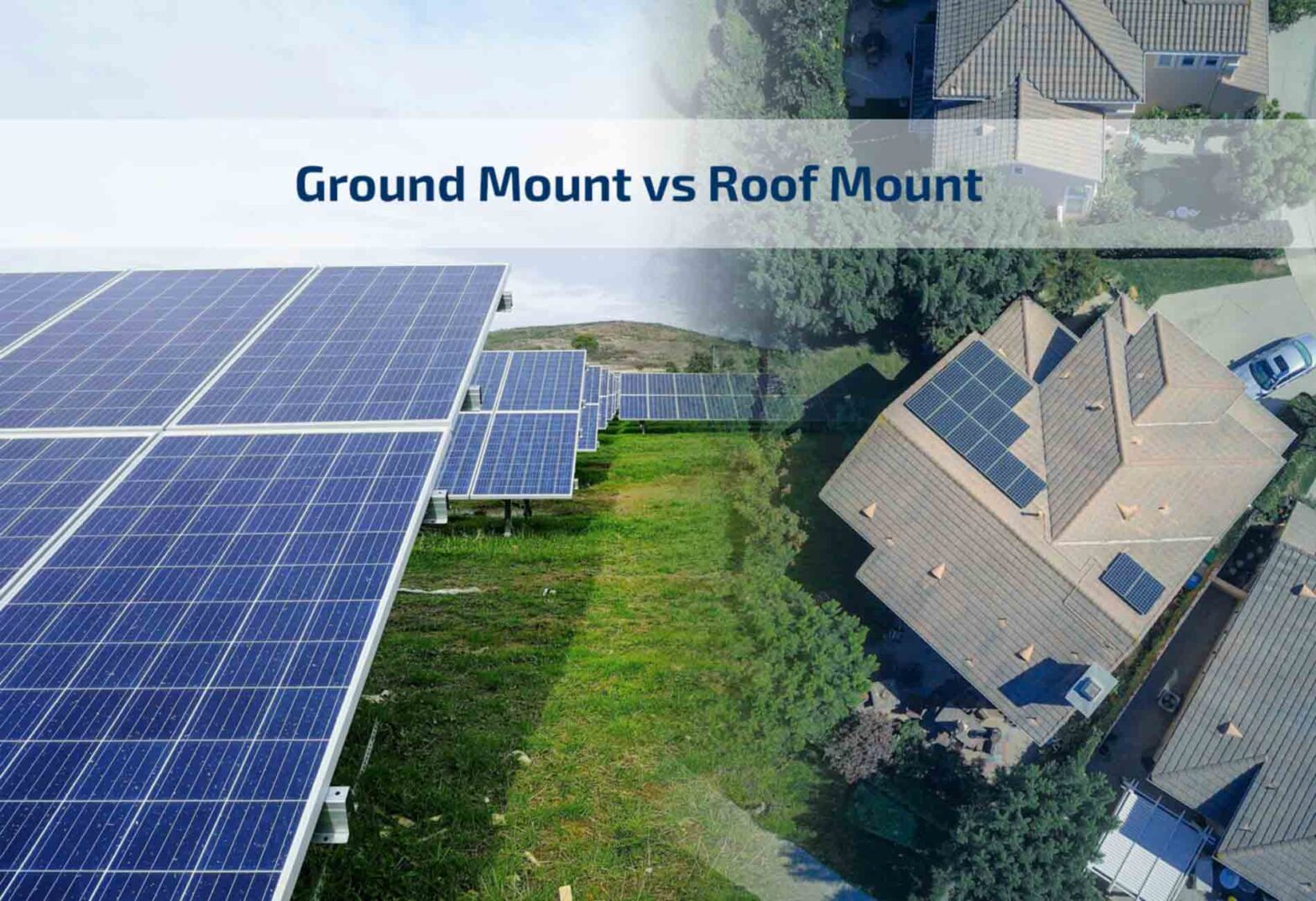Is your parking area generating revenue or just taking up space? Across India, most parking lots are idle, absorbing heat and using up valuable real estate while not generating revenue for the bottom line. But what if these spaces could work double duty?
The solar carport solutions market in India is expected to grow from ₹13.2 billion in 2023 to ₹33.7 billion in 2032, at a CAGR of 7.46 per cent during the same timeframe (Credence Research). In this guide to solar carport installation, let’s look at how you could transform the empty parking spaces that you hardly use into potent energy generators.
What Are Carport Solar Solutions?
Solar carport solutions are structures that perform two functions at once. First, they give cars a covered place to park. Second, they make clean electricity from solar panels placed on top.
These carports don’t need extra land or roof space because they use the parking area you already have. This makes them a good choice for businesses, apartment buildings, and public places that have parking lots.
The Dual Benefits of a Carport Solar System
Bringing together structural engineering and renewable technology allows for a synergistic installation that meets multiple purposes, as well as enhancing property aesthetics and long-term value proposition.
Maximising Underutilised Space
The parking areas are ordinarily of considerable unutilised overhead space. By installing solar carport solutions, you can:
– Change passive parking areas into active energy-generating assets.
– Without using any additional land, utilise existing infrastructure.
– Develop multi-function spaces that provide parking and energy at the same time.
– Implement in areas where rooftop solar may not be feasible.
Energy Generation Capabilities
Solar carport solutions offer impressive energy benefits:
– Deliver clean, renewable electricity directly to be used where it is needed.
– One way to reduce dependency on grid electricity and costs of energy bills.
– Provide predictable energy costs for decades
– Help towards sustainability goals and carbon footprint lowering.
What Must You Know Before Planning a Solar Carport Installation?
Technical feasibility, investment planning and implementation logistics significantly affect the success of a project. Make sure you consider these factors before committing resources to this dual-purpose infrastructure solution.
Site Assessment and Space Requirements
There is vast unused overhead space in parking areas. Solar carport solutions convert these passive areas into energy-generating assets, use existing infrastructure without additional land, create multi-functional spaces that serve both parking and energy needs and are applicable where rooftop solar is not feasible.
Structural and Design Factors
The structural integrity of your carport is important. Load-bearing capacity must support panels, snow, and wind. All vehicles should be accommodated by height clearance. Maximise solar exposure at the specified tilt angles. Choose materials resistant to the weather in the local climate conditions.
Regulatory Requirements
A number of regulations regarding solar carport solutions are enforced in India. They include local building permits, structural approvals, electrical connection permissions from distribution companies, compliance with Central Electricity Authority regulations and environmental clearances, if applicable.
How to Get More Energy from Your Solar Carport?
Design techniques that take advantage of power output while providing system durability and operational efficiency in the decades of reliable performance are implemented. It’s important to learn how to install solar carport systems properly in order to maximise energy production.
Panel Selection and Configuration
Solar carport solutions require selecting appropriate technology. High-efficiency monocrystalline panels maximise limited space output. Bifacial panels also capture reflected light for additional generation. Arrange panels to minimise shading. Consider aesthetics alongside performance requirements.
Inverter and System Integration
The design of the electrical system for solar installation is very important. Depending on size and budget, choose between string or microinverters. Smart monitoring tracks performance and identifies issues. It’s important to consider grid connection, storage in the battery, and integration with the already existing infrastructure.
Design Strategies to Make the Most of Limited Space
Strategies of optimisation and technical enhancements to maximise electricity generation efficiency in a way that also extends the system’s service life by carefully selecting components and arranging them intelligently.
Innovative Layout Options
Strategic configuration results in both the maximisation of parking capacity as well as energy generation. Depending on space, choose between single-row or double-row designs. Cantilever designs minimise columns. Multi-level options enable stacked parking. Modular approaches allow future expansion.
Integration with Existing Infrastructure
Blend your property seamlessly with the solar powered carport through complementary architectural designs meant to enhance visual appeal. Do integrate with lighting, security, and drainage. A good design ensures its compatibility with existing landscaping, as well as traffic flow. Consider incorporating EV charging stations.
Cost-Benefit Analysis and ROI
The financial evaluation framework offers a balance in initial expenditure versus long-term economic advantage and offers decision-makers quantifiable metrics of investment viability and expected return over time.
Investment Considerations
Understanding the financial picture:
– Initial installation costs are usually ₹45 to ₹65 per watt.
– The average annual maintenance costs are 1-2% of capital expenditure.
– Generally, payback periods are within 5-8 years, depending on energy costs.
– Ability to accelerate depreciation benefits to businesses.
Long-term Financial Benefits
The long-view economics are compelling:
– Energy savings over 25+ years of system lifespan
– Protection against rising electricity costs
– Potential revenue from excess generation
– Enhanced property value and marketability
Use our solar calculator to get your DC capacity, lifetime savings, yearly production, CO2 reduction, and more.
From Parking to Charging: Solar Carports Are Revolutionising EV Infrastructure
Transportation electrification trends are anticipated through strategic infrastructure convergence, which creates synergistic energy systems that increase the property’s utility and provide a beneficial position to owners as new mobility ecosystems emerge.
The EV Revolution Connection
Solar carport solutions prepare you for transportation’s future by providing the ideal locations for EV charging stations. Self-generated electricity reduces charging costs. The smart charging systems optimise energy use. EV-driving customers, employees, and residents are attracted to these features.
As stated by Invest India, the electric vehicle market in India is set to rise at a compound annual growth rate of 49 per cent between 2021 and 2030, and it expects annual sales to reach 17 million units by 2030.
Smart Energy Management
Optimise the system’s performance:
– Load balancing between EV charging and building power needs
– Time-of-use optimisation to maximise self-consumption
– Integration with building energy management systems
– Potential for vehicle-to-grid applications in the future
Frequently Asked Questions (FAQs)
What is the typical ROI timeframe for a solar carport installation in India?
Most solar carport installations in India achieve a complete return on investment within 5-8 years, offering 15+ years of free electricity generation.
Do solar carports require special maintenance compared to regular solar installations?
Quarterly panel cleaning and annual structural inspections are recommended. The elevated design actually reduces dust accumulation compared to ground-mounted systems.
Can solar carports withstand the extreme weather conditions common in different Indian regions?
Yes. Properly engineered carports use region-specific designs to withstand heavy monsoons, high winds up to 150 km/h, and extreme temperatures.
To Sum Up
Solar carport solutions represent the perfect fusion of practical space utilisation and clean energy generation. By transforming your parking areas from passive expenses into productive assets, you’re making a smart business decision that pays dividends for decades.
The technology is proven, the economics make sense, and the environmental benefits are substantial. When you install solar panels on the carport, you’re not just generating electricity – you’re creating a sustainable infrastructure asset.
So, if you’re ready to turn your parking space into a power station, contact Enerparc today for a free assessment and discover how our custom solar carport solutions can work for your specific needs and space constraints.






